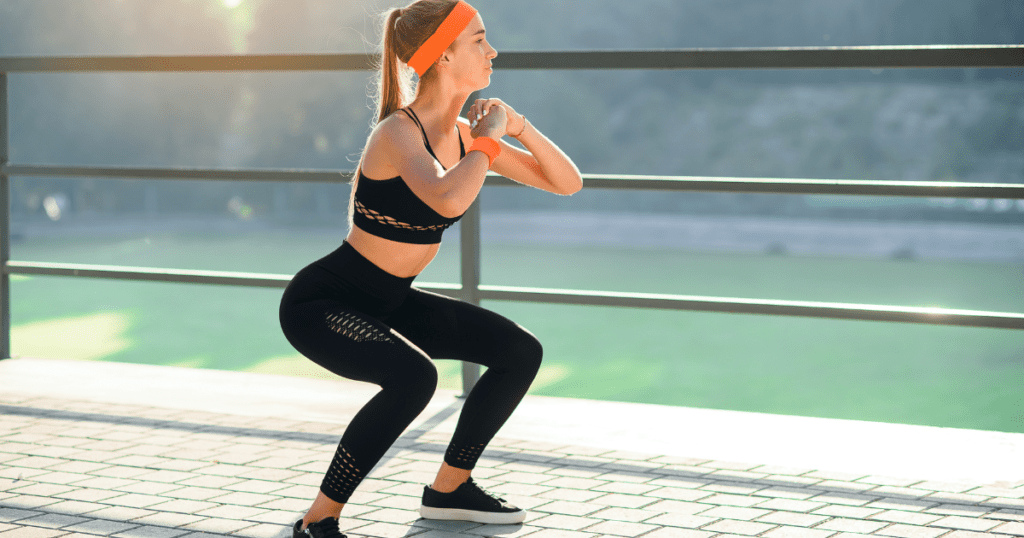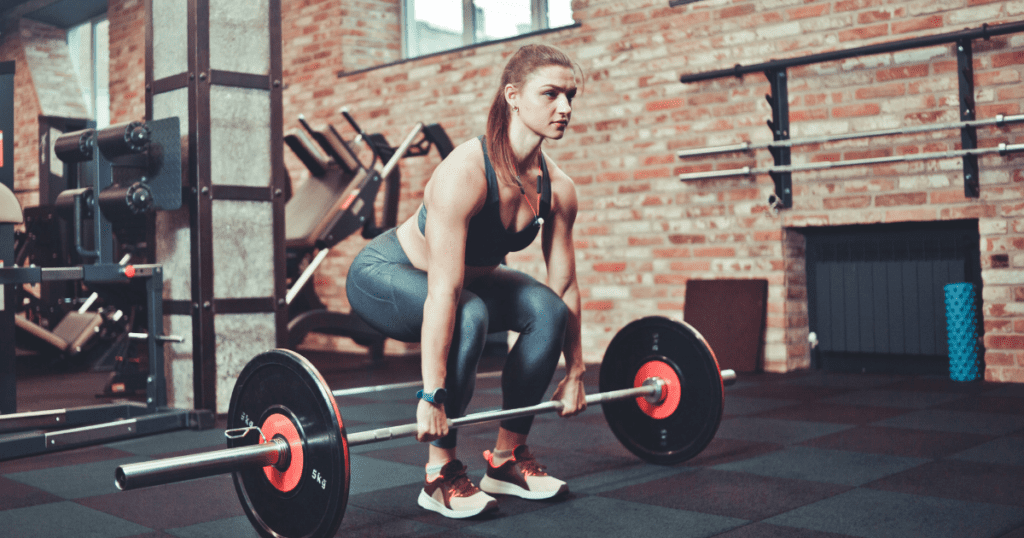Achieving strong and sculpted legs not only enhances your physical appearance but also contributes to overall health and well-being. Women often seek effective exercises to target their lower body muscles, aiming to build strength, and tone, and improve functionality. In this article, we’ll explore 7 essential exercises to help women achieve powerful and well-defined legs. Let’s dive into these exercises for strong legs, ensuring proper form and technique for optimal results.
Benefits of Strong Legs
Improved Posture and Balance
Maintaining an upright posture is more than just a matter of aesthetics. Strong legs contribute significantly to good posture, reducing the strain on the spine and enhancing overall body alignment. Additionally, the correlation between leg strength and balance is crucial, leading to a decreased risk of falls and injuries, particularly as women age.
Enhanced Athletic Performance
Beyond the confines of the gym, leg strength is a game-changer in athletic pursuits. Agility, speed, and overall athletic prowess are heightened with well-developed leg muscles. We’ll explore the specific benefits of leg strength in various sports, emphasizing how women can leverage this strength for optimal performance.
Prevention of Injuries
Understanding the biomechanics involved in injury prevention is key to unlocking the full potential of strong leg muscles. As we explore the science behind this protective function, women can gain insights into how targeted leg workouts contribute to overall musculoskeletal health.
From promoting joint stability to enhancing ligament resilience, strong legs lay the foundation for a resilient and injury-resistant body. This knowledge empowers women to proactively engage in activities, knowing that their well-conditioned leg muscles act as a shield against the unexpected.
Boosted Metabolism and Weight Management
The relationship between muscle mass, metabolism, and weight management is often overlooked. We’ll uncover how strong legs contribute to an increased metabolic rate, aiding in effective weight control. This section will explore the science behind this connection and its implications for women’s overall health.
Let’s explore the best exercises for strong legs in the article ahead.
Squats:

Squats are the cornerstone of any leg workout. They engage multiple muscle groups, including quadriceps, hamstrings, glutes, and calves. Proper squat form is crucial to prevent injury and maximize benefits. Begin with bodyweight squats and progressively add resistance through barbells, dumbbells, or kettlebells as your strength increases. Here’s how you can do simple squats:
- Stand with feet shoulder-width apart.
- Lower your body by bending your knees and pushing your hips back.
- Keep your chest up and back straight.
- Aim for a 90-degree angle at the knees.
- Return to the starting position by pushing through your heels.
Start your leg workout with the fundamental squat, a powerhouse exercise targeting your quads, hamstrings, and glutes. Aim for 3 to 4 sets with 8 to 12 repetitions, ensuring proper form and a controlled descent.
Lunges:

Lunges are excellent for targeting the quadriceps, hamstrings, and glutes while also enhancing balance and stability. There are various lunge variations, such as forward lunges, reverse lunges, and walking lunges. Experiment with different types to keep your workouts challenging and dynamic. Here’s how you can do simple Lunges:
- Take a step forward with one foot.
- Lower your body until both knees are bent at a 90-degree angle.
- Push back up to the starting position.
- Repeat on the other leg.
Lunges are excellent for sculpting each leg individually. Perform 3 to 4 sets with 10 to 15 reps per leg. Maintain balance and control throughout the movement for maximum effectiveness.
Deadlifts:

While deadlifts are often associated with working the back, they also engage the muscles in the posterior chain, including the hamstrings and glutes. Performing deadlifts correctly is crucial to avoid injury, so start with lighter weights and focus on proper form before progressing to heavier loads. Here’s how you can perform deadlifts:
- Stand with feet hip-width apart, holding a barbell in front of you.
- Keep your back straight as you hinge at your hips, lowering the barbell toward the ground.
- Engage your hamstrings and glutes to return to the starting position.
Incorporate deadlifts into your routine with 3 to 4 sets and 8 to 12 reps. This exercise targets your hamstrings, glutes, and lower back. Focus on a hip hinge movement and keep your back straight for safety.
Leg Press:

The leg press machine is a great addition to your leg workout routine, allowing you to target your quadriceps, hamstrings, and glutes while providing support for your back. Adjust the machine to your comfort level and gradually increase the weight as your strength improves.
- Stand with feet hip-width apart, holding a barbell in front of you.
- Keep your back straight as you hinge at your hips, lowering the barbell toward the ground.
- Engage your hamstrings and glutes to return to the starting position.
Utilize the leg press machine for overall lower body strength. Aim for 3 to 4 sets with 12 to 15 reps, adjusting the weight to challenge your muscles while maintaining proper form.
Calf Raises:

Don’t neglect your calf muscles! Calf raises are a simple yet effective exercise to strengthen the muscles in your lower legs. You can perform calf raises using your body weight, or add resistance by using a calf raise machine or holding dumbbells.
- Stand on a flat surface with feet hip-width apart.
- Lift your heels as high as possible, contracting your calf muscles.
- Lower back down and repeat.
Strengthen your calf muscles with calf raises. Complete 3 to 4 sets with 15 to 20 reps, lifting your heels as high as possible to fully engage the calves.
Step-Ups:
Step-ups are an excellent functional exercise that targets the quadriceps and glutes. Using a bench or step, alternate lifting each leg to the platform. This exercise mimics real-life movements and improves balance and coordination.
- Step onto a sturdy bench or platform with one foot.
- Push through the heel to lift your body.
- Step back down and repeat on the other leg.
Step-ups engage your quads and glutes. Incorporate 3 to 4 sets with 10 to 12 reps per leg. Use a sturdy platform and focus on driving through your heel.
Box Jumps:
Box jumps are a powerful plyometric exercise that not only builds leg strength but also enhances explosive power. Start with a lower box height and gradually increase as you become more comfortable with the movement.
- Stand in front of a sturdy box.
- Jump onto the box, landing softly with bent knees.
- Step back down and repeat.
Boost power and agility with box jumps. Incorporate 3 to 4 sets with 8 to 10 explosive jumps onto a sturdy box. Land softly and focus on controlled movements.
Additional Tips for Strong and Healthy Legs:
- Include Plyometrics: Integrate plyometric exercises like jump squats, box jumps, and burpees to improve explosive strength and enhance your overall athletic performance. Plyometrics also contribute to improved agility and coordination.
- Incorporate Stability and Balance Exercises: Add stability and balance exercises to your routine, such as single-leg exercises, stability ball exercises, and proprioceptive training. These exercises not only strengthen your legs but also enhance joint stability and reduce the risk of injury.
- Don’t Forget About Flexibility: Flexibility is a crucial component of leg health. Include stretching exercises like dynamic stretches before your workout and static stretches afterward. Yoga and Pilates can also be excellent choices to improve flexibility and promote overall leg mobility.
- Vary Your Rep Ranges: To promote muscle growth and strength, vary your rep ranges. Include lower rep, higher weight sets for strength building, and higher rep, moderate weight sets for muscle endurance. This approach ensures that you’re targeting different aspects of muscle development.
- Rest and Recovery: Allow adequate time for rest and recovery between leg workouts. Overtraining can lead to fatigue and increase the risk of injury. Listen to your body, and if you experience persistent soreness or fatigue, consider giving your legs an extra day of rest.
- Nutrition Matters: Fuel your body with the right nutrients to support muscle growth and recovery. Ensure you’re getting an adequate amount of protein, carbohydrates, and healthy fats. Staying hydrated is also crucial for optimal performance and recovery.
- Consult with a Professional: If you’re new to strength training or have any existing health concerns, it’s advisable to consult with a fitness professional or healthcare provider before starting a new exercise regimen. They can provide personalized guidance based on your individual needs and goals.
- Listen to Your Body: Pay attention to how your body responds to different exercises. If you experience pain (beyond normal muscle soreness), discomfort, or unusual fatigue, it’s essential to address these issues promptly and potentially modify your workout routine.
Don’t miss: Wonderful Benefits Of Waist Beads – Healthy Naari
Conclusion
Incorporating a variety of these leg exercises into your workout routine will help you achieve well-rounded lower body strength. Remember to start with proper warm-up exercises, maintain good form, and listen to your body to avoid injuries. Consistency is key, so make these exercises a regular part of your fitness regimen, and you’ll be on your way to building strong, powerful legs.
